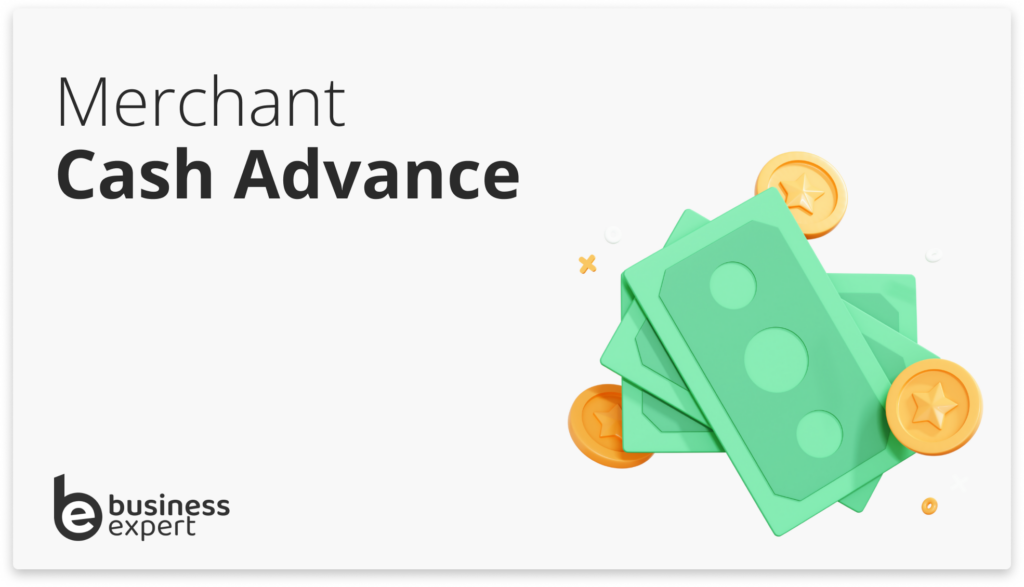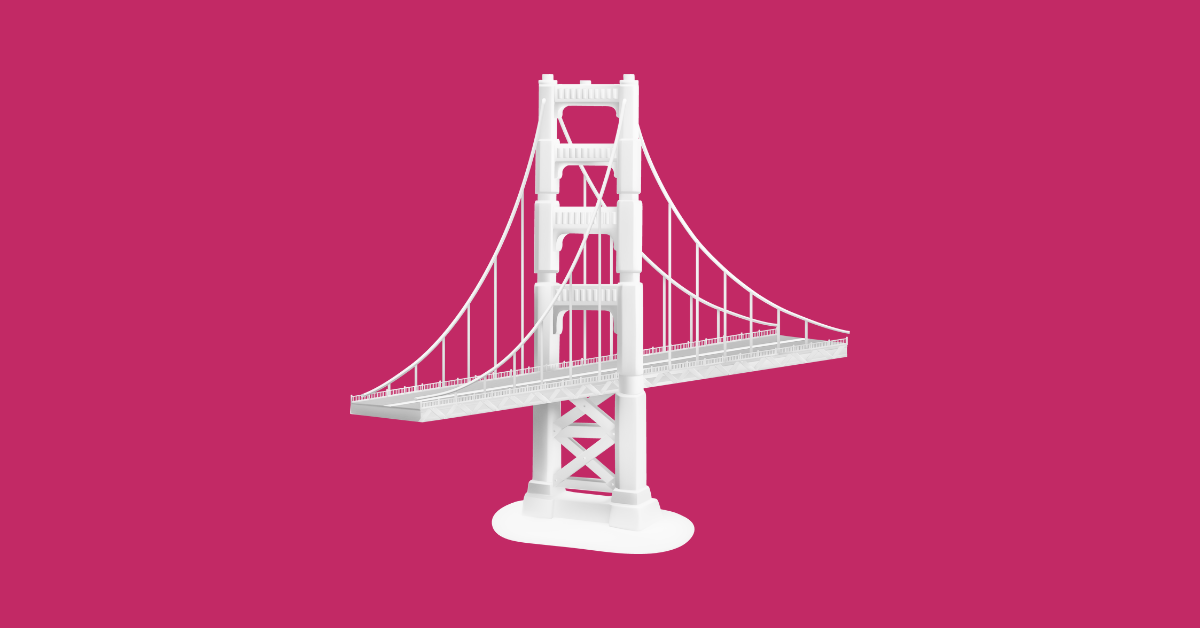Unlike traditional business loans that necessitate fixed monthly repayments, a merchant cash advance provides a sum of capital upfront, with repayment aligned to the business’s card transaction earnings. This flexibility offers unique opportunities, especially for industries with fluctuating sales.
I’ll cover the subject in detail in this article, explaining how this straightforward financing option can quickly boost your business while also highlighting aspects to be cautious about.
- What is a Merchant Cash Advance?
- Key Advantages
- What are the downsides?
- How Does a Merchant Cash Advance Work?
- How Much Can I Borrow?
- Is a Merchant Cash Advance a Loan?
- What Can I use a Merchant Cash Advance For?
- How much does an MCA cost?
- Is a Merchant Cash Advance the Right Choice for Your Business?
- Can you Get a Merchant Cash Advance with a Poor Credit Rating?
- FAQs


What is a Merchant Cash Advance?
A merchant cash advance (MCA) is a short-term financing option for businesses that accept credit or debit card payments.
With an MCA, a business receives a lump sum of money upfront, which is repaid using a percentage of its daily or weekly credit card sales.
Here are the key features:
- No fixed term: There is no fixed repayment term for an MCA. The loan is repaid until the full amount plus fees are repaid.
- Flexible repayment: Repayments are based on a percentage of daily or weekly credit card sales, so they fluctuate with the business’s revenue. This can be helpful for businesses with seasonal sales or unpredictable cash flow.
- Quick access to funds: MCAs can be approved and funded quickly, often within 24 hours.
- Cost: MCAs can be more expensive than traditional financing options like bank loans. The cost is often expressed as a factor rate, which is a multiplier of the advance amount.
- Eligibility: To qualify for an MCA, a business typically needs to have a minimum monthly credit card sales volume. Other requirements may also apply, such as being in business for a certain amount of time.
Key Advantages of Merchant Cash Advances
Flexibility in Repayment
An MCA is often tied to a business’s daily credit card sales. The repayments are usually a fixed percentage of these sales, allowing repayments to fluctuate with the business’s revenue. During periods of strong sales, repayment is faster, while during slower periods, the repayment amount may be reduced.
Quick Access to Funds
Unlike traditional business loans, an MCA can often be processed rapidly. The application and approval process can be relatively quick, with funds sometimes being available within days of application. For businesses requiring immediate capital, this can be an attractive feature.
No Collateral Required
Traditional business loans may necessitate collateral, such as property or other valuable assets. In contrast, an MCA generally doesn’t require any collateral. This can be a substantial benefit for businesses that do not have significant assets to pledge or wish to avoid placing valuable assets at risk.
Less Stringent Credit Requirements
An MCA provider often focuses more on the daily credit card sales and the overall revenue of a business rather than the personal credit score of the business owner. This can make an MCA more accessible to business owners with less-than-perfect credit histories.
Customisation and Alignment with Business Needs
Different providers may offer various terms and structures for an MCA, allowing for a degree of customisation. The alignment with daily credit card sales also means that the MCA is directly tied to the business’s operations, potentially making it a more natural fit for certain types of businesses.
What are the downsides of a merchant cash advance?
While a Merchant Cash Advance (MCA) can provide quick access to capital, it does come with certain downsides that businesses should be aware of:
- High Costs: MCAs often carry higher costs compared to traditional business loans. The factor rate applied can translate to an effective annual percentage rate (APR) that may be substantially higher than other financing options. This can significantly impact the overall profitability of your business.
- Daily or Weekly Repayments: MCAs are commonly repaid by automatically deducting a percentage of daily or weekly credit card sales. While this aligns repayments with sales, it can also create cash flow challenges, especially if sales fluctuate or decline.
- Potential Impact on Cash Flow: Consistent withdrawals from credit card sales can strain cash flow, particularly if the retrieval rate is high. This could impact your ability to cover regular business expenses and invest in growth opportunities.
- Lack of Regulation: MCAs are not always subject to the same regulatory oversight as traditional bank loans. This may lead to terms and practices that are less favourable to the borrower. Thoroughly understanding the agreement is essential to avoid unforeseen challenges.
- Potential for Debt Cycle: If a business is unable to manage the regular repayments, it might seek additional advances, creating a cycle of debt that can be difficult to exit. This can compound financial stress and risk.
- Limited Federal Protections: MCAs are structured as commercial transactions rather than loans, so they may not include some of the borrower protections that apply to traditional loans.
- Restrictions on Business Operations: Some MCA agreements may contain clauses that restrict certain business decisions, such as changing credit card processors, which could limit operational flexibility.
- Potential Impact on Customer Relationships: If customers notice that a portion of their payments is being diverted to an MCA provider, it may raise questions or concerns, potentially impacting customer relationships.
- Potential for Legal and Collection Practices: If a business struggles to make the agreed repayments, some MCA providers may resort to aggressive collection practices or legal action, leading to additional stress and costs.
- Lack of Benefit to Credit Profile: Unlike traditional loans, repayments on MCAs may not contribute to building a business’s credit profile, as they might not be reported to credit bureaus.
How Does a Merchant Cash Advance Work?
A merchant cash advance (MCA) is a short-term financing option for businesses that accept credit or debit card payments. With an MCA, a business receives a lump sum of money upfront, which is repaid using a percentage of its daily or weekly credit card sales.
Here is a more detailed look at how an MCA works:
- Application and approval: A business applies for an MCA by providing the lender with information about its monthly credit card sales. The lender will use this information to determine the advance amount and the retrieval rate.
- Receiving the advance: Once approved, the business receives a lump sum of cash. The amount of the advance will depend on the business’s credit card sales history and the lender’s assessment of its ability to repay the loan.
- Agreeing to terms: Along with the advance amount, the lender will also set a factor rate. The factor rate is a multiplier that is applied to the advance amount to determine the total repayment amount. For example, if the factor rate is 1.25 and the advance amount is £10,000, the total repayment amount will be £12,500.
- Repayment structure: Repayment of an MCA begins immediately and occurs automatically as customers make credit or debit card payments to the business. A predetermined percentage of each card transaction (the retrieval rate) is paid directly to the lender.
- Flexible repayment schedule: Unlike traditional loans with fixed monthly payments, the repayment schedule for an MCA is flexible and aligns with the business’s daily or weekly credit card sales. This means that during periods of higher sales, repayment is quicker, while during slower periods, repayment is correspondingly slower.
- Full repayment: The repayment process continues until the full agreed-upon amount (the advance plus the factor rate) is repaid. There is no fixed term for an MCA; the repayment period fluctuates with the business’s credit card sales.
- Potential for renewal: Some businesses may choose to renew or “re-up” their MCA once a certain percentage of the original amount has been repaid. This can create a continuous funding cycle, although it should be pursued with caution due to the cost structure of MCAs.
- Cost considerations: It is important for businesses to understand the total cost of an MCA, which can be higher than other financing options. The cost of an MCA is typically expressed as a factor rate, which is a multiplier applied to the advance amount. The factor rate will vary depending on the lender and the business’s creditworthiness.
How Much Can I Borrow Through a Merchant Cash Advance?
The amount you can borrow through a merchant cash advance (MCA) is primarily determined by your business’s credit card sales, as well as other factors like the industry, duration of operation, and overall financial health.
Here’s a general overview:
- Credit Card Sales Volume: MCA providers typically look at your daily or monthly credit card sales to determine the amount you can borrow. It’s common for providers to offer an advance that’s equivalent to a percentage of your business’s average credit card sales over a specified period, such as the previous 3 to 6 months.
- Industry and Business Model: Different industries have varying risk profiles, and this may affect the amount an MCA provider is willing to advance. For instance, a business in a stable industry with predictable sales might receive a more substantial advance compared to a business in a more volatile sector.
- Duration of Operation: Businesses that have been operational for a more extended period and have a proven track record of consistent sales may be eligible for larger advances.
- Financial Health and Creditworthiness: Some MCA providers may also look at factors like overall financial health, credit scores, and other outstanding loans or financial commitments when determining the advance amount.
- Provider’s Terms and Conditions: Each MCA provider might have different criteria, terms, and risk appetites, which could lead to variations in the amounts offered.
Is a Merchant Cash Advance a Loan?
sum of money in exchange for a percentage of their future credit or debit card sales. It is often referred to as a loan, but there are some key differences between the two.
Differences between MCAs and traditional loans:
Structure and repayment: A traditional loan typically provides a lump sum of money that is repaid over a fixed period, with regular monthly payments. An MCA, on the other hand, provides a lump sum that is repaid as a percentage of the business’s daily or weekly credit card sales. This means that the repayment amount can fluctuate depending on the business’s sales volume. For example, if a business receives an MCA of £10,000 and has a factor rate of 1.25, it will repay a total of £12,500 over the life of the advance. The repayment amount will be calculated as a percentage of the business’s daily or weekly credit card sales, and it will be deducted from the business’s credit card receipts.
Interest rates vs. factor rates: Traditional loans typically have an annual interest rate that is applied to the outstanding balance. The interest rate is calculated based on the borrower’s credit score and other factors. MCAs, on the other hand, use a factor rate, which is a multiplier that is applied to the advance amount. The factor rate represents the total cost of the advance, including interest and fees. For example, if a business receives an MCA of £10,000 with a factor rate of 1.25, the total cost of the advance will be £12,500. This includes the £10,000 advance amount and the £2,500 in interest and fees.
Collateral and security: Traditional loans may require collateral, such as a business asset or personal guarantee. This is to protect the lender in case the borrower defaults on the loan. MCAs typically do not require collateral, as the lender is secured by the business’s future credit card sales.
Legal classification: In the United Kingdom, MCAs are not classified as loans. They are structured as a purchase of future receivables, meaning the business is selling a portion of its future credit card sales to the MCA provider. This distinction can have various legal and regulatory implications.
Risk profile: MCAs are considered to be a riskier form of financing than traditional loans. This is because the repayment amount is tied to the business’s sales volume. If the business’s sales decline, the repayment amount will also decline, which can make it difficult to repay the advance. Therefore, while an MCA provides liquidity much like a traditional loan, its structure, cost considerations, and alignment with the business’s revenue streams set it apart.
What Can I use a Merchant Cash Advance For?
You can use the funds released by a merchant cash advance in multiple key areas of the business including:
- Premises refit or expansion
- Large order funding
- Regular cashflow
- Paying VAT or tax bills
- Marketing and new business programmes
- Purchase of plant or office equipment
- Unexpected repairs or renovations
- Emergency expenses
- Equipment upgrade
- Website development
- Technology upgrade
- Machinery purchase
How much does an MCA cost?
The cost of an MCA can vary significantly based on factors such as the amount advanced, the retrieval rate, and the term length.
Below are concrete examples that illustrate how the cost of an MCA might be structured:
Example 1:
- Advance Amount: £10,000
- Factor Rate: 1.2 (This rate multiplies the advance amount to determine the total repayment)
- Total Repayment: £12,000 (£10,000 x 1.2)
- Retrieval Rate: 10% of daily credit card sales
- Term Length: Until the total repayment is fulfilled
In this example, the business would repay £12,000 from the £10,000 advance, representing a cost of £2,000.
Example 2:
- Advance Amount: £20,000
- Factor Rate: 1.3
- Total Repayment: £26,000 (£20,000 x 1.3)
- Retrieval Rate: 15% of daily credit card sales
- Term Length: Specified or until the total repayment is fulfilled
Here, the cost for the £20,000 advance would be £6,000.
Example 3:
- Advance Amount: £5,000
- Factor Rate: 1.15
- Total Repayment: £5,750 (£5,000 x 1.15)
- Retrieval Rate: 8% of daily credit card sales
- Term Length: Specified or until the total repayment is fulfilled
In this instance, the cost of the £5,000 advance would be £750.
Is a Merchant Cash Advance the Right Choice for Your Business?
Determining whether a Merchant Cash Advance aligns with your business’s needs requires careful consideration. The suitability of an MCA often hinges on your volume of card payments. Businesses that frequently receive card payments, such as restaurants, takeaways, shops, cafes, hotels, and even service providers like plumbers, carpenters, and electricians, can find MCAs particularly advantageous.
Essential Tips for Merchant Cash Advance Approval
Qualifying for a Merchant Cash Advance involves certain prerequisites. Consider these factors to bolster your chances of approval:
- : While not a strict requirement, a good credit rating can improve terms and conditions and potentially aid in approval.
- : Analise your business’s cash inflow to align with MCA requirements, which often necessitate channelling cash to card transactions.
- : Lenders appreciate consistent and robust sales records, indicating revenue generation potential.
- : Well-maintained financial records, including transaction history and bank statements, build lender confidence.
- : Present a clear plan detailing fund usage, showcasing how MCA repayment harmonises with current and projected sales.
- : Lenders favour businesses with a stable operating track record.
- : Given MERCHANT CASH ADVANCE ties to card sales, consistent transaction history enhances your application.
- : Select lenders with transparent practices and fair terms. Caution against high-pressure tactics.
- : Anticipate lender requests for additional documentation, and provide promptly to streamline the approval process.
Can you Get a Merchant Cash Advance with a Poor Credit Rating?
If you have a poor credit rating, you may be wondering if you can still qualify for a merchant cash advance (MCA). The good news is that it is possible, but you may have to meet stricter requirements than someone with a good credit score.
MCAs are a type of short-term business loan that is repaid through a percentage of a business’s future credit card sales. They are often considered to be a good option for businesses with poor credit because they do not require collateral and can be approved quickly.
However, it is important to remember that MCAs typically have higher interest rates and fees than other types of business loans. This is because lenders view businesses with poor credit as being riskier borrowers.
If you are considering an MCA with poor credit, there are a few things you should keep in mind:
- Expect higher interest rates and fees. As mentioned above, MCAs for businesses with poor credit typically have higher interest rates and fees than other types of business loans. This is because lenders view these businesses as being riskier borrowers.
- Be prepared to provide a personal guarantee. A personal guarantee is a promise to repay the loan if the business does not. This means that if your business defaults on the loan, you could be personally responsible for repaying the debt.
- Shop around and compare rates. There are many different lenders that offer MCAs. It is important to shop around and compare rates and fees before you choose a lender.
- Make sure you understand the terms of the loan. Before you sign any paperwork, be sure to read and understand the terms of the loan, including the interest rate, fees, and repayment schedule.
If you are considering an MCA with poor credit, it is important to weigh the pros and cons carefully. These loans can be a good option for businesses that need quick access to cash, but they can also be expensive. It is important to make sure that you can afford the repayment terms before you commit to an MCA.
FAQs
Can I get a merchant cash advance without a credit check?
Some MCA providers may offer advances without a traditional credit check, focusing instead on business performance and credit card sales. However, terms may vary, and due diligence is recommended.
Can I get a merchant cash advance without bank statements?
It’s less common, but some providers might offer an MCA without requiring bank statements, assessing eligibility based on credit card sales. Each provider’s requirements may differ.
Can I repay a merchant cash advance early?
Yes, you can typically repay an MCA early. However, since the cost is determined upfront using a factor rate, early repayment might not result in interest savings. Reviewing the terms with the provider is essential.
Do merchant cash advances hurt my credit score?
MCAs usually don’t affect personal credit scores, but if the business defaults and it leads to legal action, it could potentially impact credit.
Can I get a same-day merchant cash advance?
Some providers offer same-day MCAs due to the focus on credit card sales rather than extensive credit checks. The process can be expedited, but it may vary between providers.
What are the interest rates on merchant cash advances?
MCAs don’t have traditional interest rates but use a factor rate to determine the repayment amount. This can range from 1.1 to 1.5 or higher.
What happens if I default on a merchant cash advance?
Defaulting on an MCA could lead to aggressive collection practices, legal action, or other consequences stipulated in the contract. The exact repercussions will depend on the terms agreed with the provider.
Can I keep my existing card machine provider with a merchant cash advance?
Some MCA providers may allow businesses to continue using their existing card machine provider, while others might require a switch. It is best to clarify this with the MCA provider during the application process.



